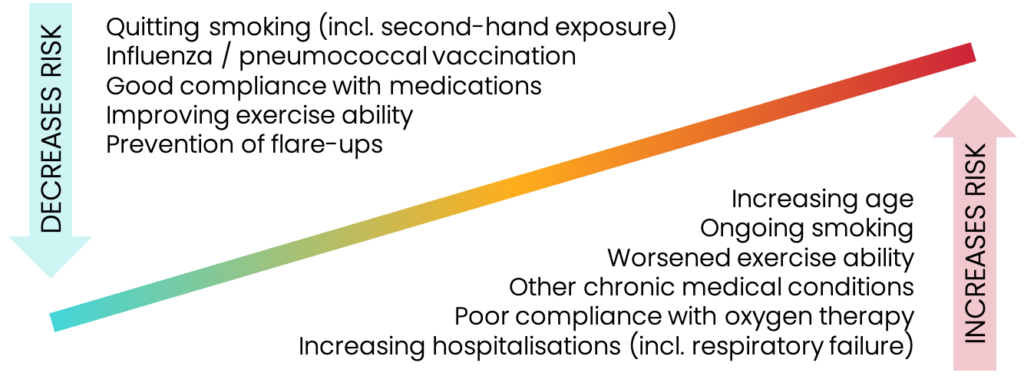
DISEASE STAGES OF COPD
COPD severity is determined according to a combination of factors, in accordance with lung health guidelines. These guidelines can differ from country to country, which can result in some mixed messages or possible confusion. The information below relates to the Australian and New Zealand COPD-X guidelines.
COPD Severity |
|||
| Mild | Moderate | Severe | |
|---|---|---|---|
| Lung function (FEV1)* | 60-80% predicted | 40-59% predicted | <40% predicted |
| Typical symptoms | Few symptoms Breathless on moderate exertion Little or no impact on daily activities |
Breathless walking on level ground Increased limitation with daily activities |
Breathless with minimal exertion Symptoms significantly restrict daily activities |
| History of flare-ups | Frequency and severity increase → | ||
| Recurrent chest infections Flare-ups requiring corticosteroids / antibiotics |
Frequent flare-ups and hospital admissions | ||
| Co-existing medical conditions | ← Present throughout → | ||
* FEV1 is the maximum amount of air a person is able to expire in the first second following their biggest breath in. Average values according to age and gender have been calculated for healthy individuals and the FEV1 results from the person’s lung function test (spirometry) is compared against these predicted values to determine the degree of airflow limitation.
In most cases, deterioration happens over several years and it is difficult to predict when the end of life will be for someone with COPD. Learn more about the physical signs of the last days and what to expect.
Treatment options including palliative care are available for every stage of COPD and can be tailored to the individual’s needs.
Disease progression
Many effective treatments are available to help manage specific aspects of COPD. Despite this, COPD is a disease associated with progressive decline over time. It is not easy to predict the rate at which COPD will progress for individuals as this is influenced by many factors.
Quitting smoking is the most important modifiable factor in disease progression. It’s never too late to quit.
Examples of factors that may improve (slow) or worsen (accelerate) the rate of decline are shown below.


